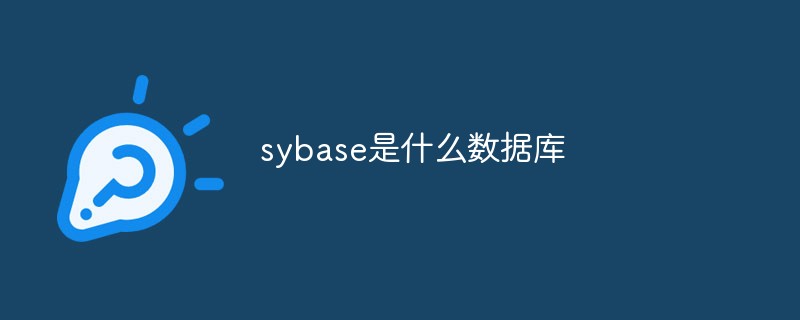 Backend Development
Backend Development PHP Tutorial
PHP Tutorial How to use ORM to simplify database operations in PHP applications
How to use ORM to simplify database operations in PHP applicationsHow to use ORM to simplify database operations in PHP applications
When developing PHP applications, database operations are an essential link. The traditional database operation method often requires writing a large number of SQL statements, making the code lengthy and difficult to maintain. In order to simplify database operations and improve development efficiency, modern PHP framework provides ORM (Object Relational Mapping) function.
ORM is a technology that maps database tables into objects. It allows developers to directly use an object-oriented approach to perform database operations without manually writing SQL statements. The ORM framework establishes a one-to-one mapping relationship between database tables and objects, and operates database tables through the properties and methods of objects.
The following is a simple example to illustrate how to use the ORM framework to simplify database operations in PHP applications.
First, we need to introduce a popular ORM framework, such as Laravel's Eloquent ORM.
require_once 'vendor/autoload.php';
use IlluminateDatabaseCapsuleManager as Capsule;
$capsule = new Capsule;
$capsule->addConnection([
'driver' => 'mysql',
'host' => 'localhost',
'database' => 'mydatabase',
'username' => 'root',
'password' => 'password',
'charset' => 'utf8',
'collation' => 'utf8_unicode_ci',
'prefix' => '',
]);
$capsule->bootEloquent();In the above code, we introduced Eloquent ORM and configured the database connection information.
Next, we can define a model to represent a database table. For example, suppose we have a users table (users) containing id, name, and email fields.
use IlluminateDatabaseEloquentModel;
class User extends Model
{
protected $table = 'users';
protected $fillable = ['name', 'email'];
}In the above code, we inherit Eloquent’s Model class and specify the database table name corresponding to the model. In addition, we use the $fillable attribute to specify fields that allow bulk assignment.
Now, we can perform database operations by creating an instance of the User model.
$user = new User; $user->name = 'John Doe'; $user->email = 'john@example.com'; $user->save();
In the above code, we first create an instance of the User model, then assign values to the attributes of the instance, and finally call the save() method to save the data to the database.
In addition to adding new data, the ORM framework also provides rich query functions. For example, we can query data that meets the conditions by calling the static method of the User model.
$users = User::where('name', 'John Doe')->get();In the above code, we use the where() method to specify the query conditions, and then call the get() method to obtain the query results.
The ORM framework also provides other common database operations, such as updating data, deleting data, etc. These operations can be easily performed by calling methods on the model instance.
By using the ORM framework to simplify database operations in PHP applications, we can greatly improve development efficiency. There is no need to manually write SQL statements, and the code is more concise and clear. At the same time, the ORM framework also provides powerful query and correlation functions, making database operations more flexible and efficient.
To sum up, for database operations in PHP applications, using the ORM framework can help us better utilize object-oriented thinking for development and improve the readability and maintainability of the code. When choosing a framework, you can consider Laravel's Eloquent ORM and other popular ORM frameworks, and choose the most suitable framework based on your needs and project characteristics.
The above is the detailed content of How to use ORM to simplify database operations in PHP applications. For more information, please follow other related articles on the PHP Chinese website!
 深入理解MySQL索引优化器工作原理Nov 09, 2022 pm 02:05 PM
深入理解MySQL索引优化器工作原理Nov 09, 2022 pm 02:05 PM本篇文章给大家带来了关于mysql的相关知识,其中主要介绍了关于索引优化器工作原理的相关内容,其中包括了MySQL Server的组成,MySQL优化器选择索引额原理以及SQL成本分析,最后通过 select 查询总结整个查询过程,下面一起来看一下,希望对大家有帮助。
 sybase是什么数据库Sep 22, 2021 am 11:39 AM
sybase是什么数据库Sep 22, 2021 am 11:39 AMsybase是基于客户/服务器体系结构的数据库,是一个开放的、高性能的、可编程的数据库,可使用事件驱动的触发器、多线索化等来提高性能。
 visual foxpro数据库文件是什么Jul 23, 2021 pm 04:53 PM
visual foxpro数据库文件是什么Jul 23, 2021 pm 04:53 PMvisual foxpro数据库文件是管理数据库对象的系统文件。在VFP中,用户数据是存放在“.DBF”表文件中;VFP的数据库文件(“.DBC”)中不存放用户数据,它只起将属于某一数据库的 数据库表与视图、连接、存储过程等关联起来的作用。
 数据库系统的构成包括哪些Jul 15, 2022 am 11:58 AM
数据库系统的构成包括哪些Jul 15, 2022 am 11:58 AM数据库系统由4个部分构成:1、数据库,是指长期存储在计算机内的,有组织,可共享的数据的集合;2、硬件,是指构成计算机系统的各种物理设备,包括存储所需的外部设备;3、软件,包括操作系统、数据库管理系统及应用程序;4、人员,包括系统分析员和数据库设计人员、应用程序员(负责编写使用数据库的应用程序)、最终用户(利用接口或查询语言访问数据库)、数据库管理员(负责数据库的总体信息控制)。
 microsoft sql server是什么软件Feb 28, 2023 pm 03:00 PM
microsoft sql server是什么软件Feb 28, 2023 pm 03:00 PMmicrosoft sql server是Microsoft公司推出的关系型数据库管理系统,是一个全面的数据库平台,使用集成的商业智能(BI)工具提供了企业级的数据管理,具有使用方便可伸缩性好与相关软件集成程度高等优点。SQL Server数据库引擎为关系型数据和结构化数据提供了更安全可靠的存储功能,使用户可以构建和管理用于业务的高可用和高性能的数据应用程序。
 access数据库的结构层次是什么Aug 26, 2022 pm 04:45 PM
access数据库的结构层次是什么Aug 26, 2022 pm 04:45 PM结构层次是“数据库→数据表→记录→字段”;字段构成记录,记录构成数据表,数据表构成了数据库。数据库是一个完整的数据的记录的整体,一个数据库包含0到N个表,一个表包含0到N个字段,记录是表中的行。
 go语言可以写数据库么Jan 06, 2023 am 10:35 AM
go语言可以写数据库么Jan 06, 2023 am 10:35 AMgo语言可以写数据库。Go语言和其他语言不同的地方是,Go官方没有提供数据库驱动,而是编写了开发数据库驱动的标准接口,开发者可以根据定义的接口来开发相应的数据库驱动;这样做的好处在于,只要是按照标准接口开发的代码,以后迁移数据库时,不需要做任何修改,极大方便了后期的架构调整。
 mysql查询慢的因素除了索引,还有什么?Jul 19, 2022 pm 08:22 PM
mysql查询慢的因素除了索引,还有什么?Jul 19, 2022 pm 08:22 PMmysql查询为什么会慢,关于这个问题,在实际开发经常会遇到,而面试中,也是个高频题。遇到这种问题,我们一般也会想到是因为索引。那除开索引之外,还有哪些因素会导致数据库查询变慢呢?


Hot AI Tools

Undresser.AI Undress
AI-powered app for creating realistic nude photos

AI Clothes Remover
Online AI tool for removing clothes from photos.

Undress AI Tool
Undress images for free

Clothoff.io
AI clothes remover

AI Hentai Generator
Generate AI Hentai for free.

Hot Article

Hot Tools

SublimeText3 English version
Recommended: Win version, supports code prompts!

MinGW - Minimalist GNU for Windows
This project is in the process of being migrated to osdn.net/projects/mingw, you can continue to follow us there. MinGW: A native Windows port of the GNU Compiler Collection (GCC), freely distributable import libraries and header files for building native Windows applications; includes extensions to the MSVC runtime to support C99 functionality. All MinGW software can run on 64-bit Windows platforms.

Notepad++7.3.1
Easy-to-use and free code editor

PhpStorm Mac version
The latest (2018.2.1) professional PHP integrated development tool

ZendStudio 13.5.1 Mac
Powerful PHP integrated development environment




